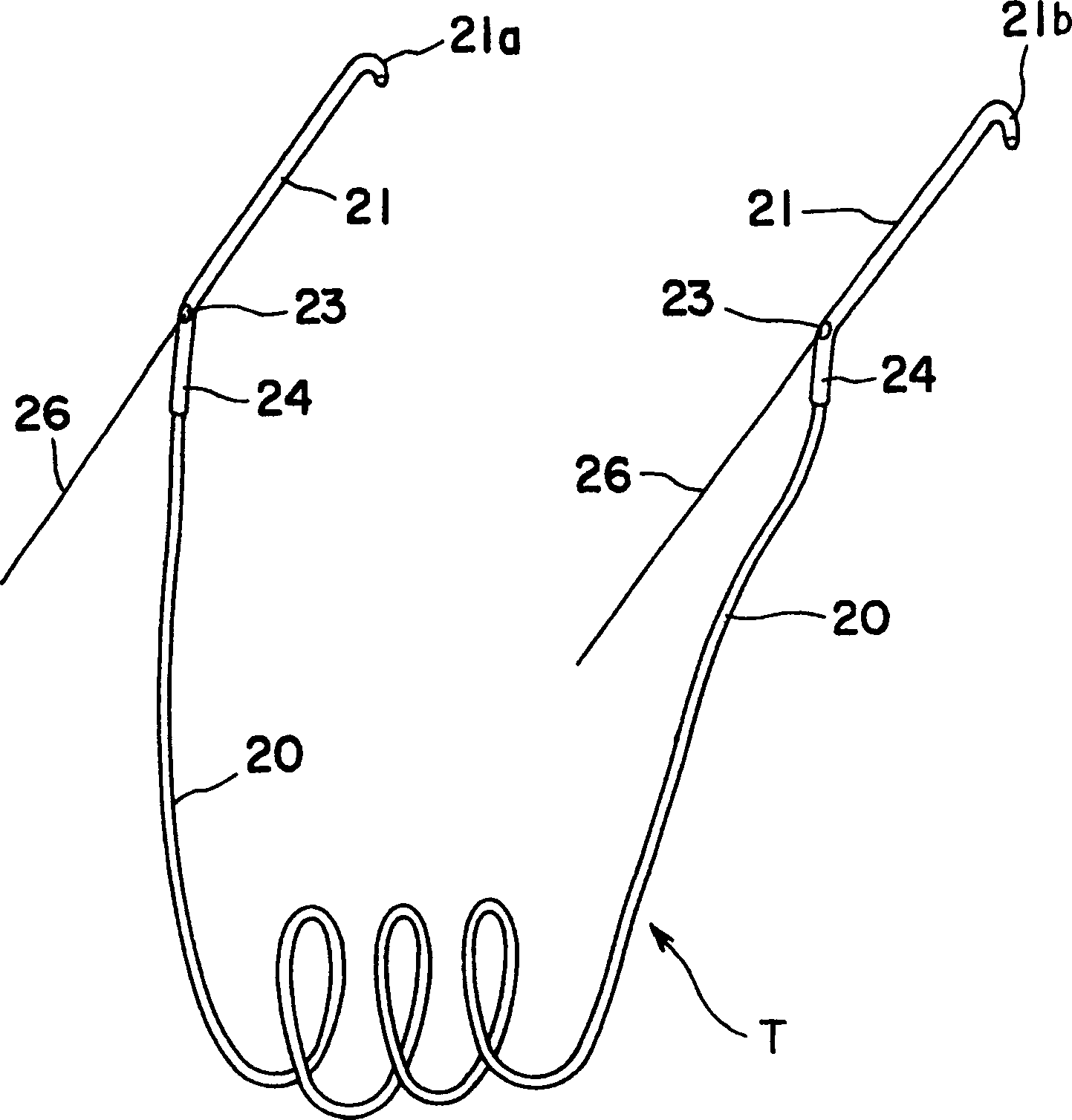Nasolacrimal duct tube used for lacrimal duct reformation operation
A technique of nasolacrimal duct and flexible tube, which is applied in the directions of surgery, ophthalmic surgery, application, etc., can solve the problems of not easy, injuring the nasal mucosa, difficult operation, etc.
- Summary
- Abstract
- Description
- Claims
- Application Information
AI Technical Summary
Problems solved by technology
Method used
Image
Examples
Embodiment Construction
[0027] Next, embodiments of the present invention will be described.
[0028] Such as figure 1 As shown, according to the embodiment of the nasolacrimal duct hose and the nasolacrimal duct hose device for lacrimal duct reconstruction surgery according to the present invention, there is a hose T with an outer diameter that can be inserted into the lacrimal duct. The indwelling hose part 20 and the flexible light-transmitting (transparent or translucent) probe hose part 21 that is respectively connected to both ends of the indwelling hose part 20 to constitute an extension of the indwelling hose part 20 are composed of . The flexible indwelling hose portion 20 may be made of silicone as in prior art examples. Furthermore, the probe hose part 21 can consist, for example, of a material selected from monomers or mixtures of polyolefins, polyamides or polyurethanes. Tubes made of materials such as polyolefin are harder than silicone tubes, have excellent shape retention, and are...
PUM
| Property | Measurement | Unit |
|---|---|---|
| angle | aaaaa | aaaaa |
Abstract
Description
Claims
Application Information
 Login to View More
Login to View More - R&D
- Intellectual Property
- Life Sciences
- Materials
- Tech Scout
- Unparalleled Data Quality
- Higher Quality Content
- 60% Fewer Hallucinations
Browse by: Latest US Patents, China's latest patents, Technical Efficacy Thesaurus, Application Domain, Technology Topic, Popular Technical Reports.
© 2025 PatSnap. All rights reserved.Legal|Privacy policy|Modern Slavery Act Transparency Statement|Sitemap|About US| Contact US: help@patsnap.com



